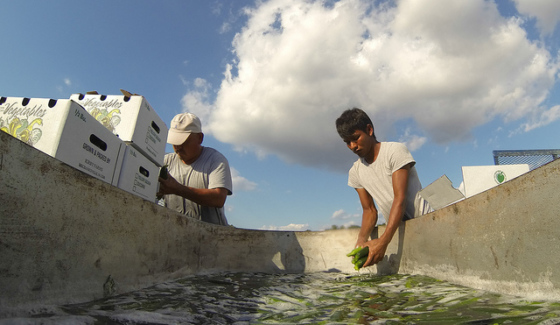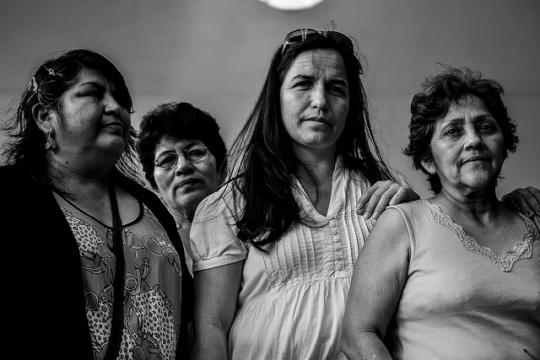
Politics & Possibilities for Immigration Reform
The surge of child migrants from Central America has put the issue of immigration back on the table.
In a public event for the Chappaqua Library (NY) on May 14, Michael Shifter discussed the impact of President Trump’s first year in office upon American foreign policy and relations with Latin America. Shifter outlines three policy issues that have recently heightened tensions between the United States and Latin America: isolationist and protectionist immigration and trade policies, the reversal of the Cuban thaw, and the Trump administration’s return to a more militant War on Drugs. At a time when the United States is receding and Latin American countries are more eager than ever for international cooperation and trade, China has found the perfect void to increase its influence throughout the region. Michael Shifter evaluates these complex dynamics and what they may foreshadow for Latin America’s future.
“We’re at a very unique moment. This moment is especially unique for US-Latin American relations because in some ways, Latin America – through Mexico – was the dominant issue in the last presidential campaign. The two issues responsible for putting Donald Trump in the White House are immigration and trade. And both of those only come together in one country: Mexico. Mexico became the proxy for the anxiety and anger about globalization that was reflected in immigration and trade. As a result, that has injected a lot of strain and resentment in Mexico, and by extension, the rest of Latin America.”
“The idea of [Trump] building a wall on the US-Mexican border goes far beyond Mexico. It also extends to Central America and the rest of Latin America. It is perceived as a message to Latin Americans that says ‘You are not welcome in the United States.’”
“The irony is that at the moment that President Trump is pursuing a more protectionist and isolationist policy on trade is also the moment that most Latin American governments – which were always more protectionist in the past – are now very eager for greater cooperation and increased trade with the US and other partners across the world. There is a disconnect between the US looking in and Latin American countries opening up.”
“There have been changes in three issues that have always been important and have created irritation in US-Latin American relations. The one I’ve mentioned is immigration, where the United States is pursuing a much harder line in terms of sanctuary cities, ending the DACA program, and terminating the protected status for Central Americans. These have historically been extended under both Democratic and Republican administrations, but that is now coming to an end. The second issue is Cuba. The opening to Cuba was perhaps the greatest legacy of the Obama administration. The Cubans were very hopeful that this would begin to open greater engagement with the United States and over time. This policy has virtually been reversed by the Trump administration. While the US-Cuban relationship still exists and there is a Cuban embassy here and a US embassy in Havana, it has been reduced substantially. The third issue is drug policy. President Obama began to have a more open, tolerant policy towards Latin America, rather than the traditional, hard-line policy. However, that has been reversed under President Trump as well.”
“[President Trump has reversed Obama’s more tolerant approach towards the War on Drugs for several reasons]. For one, the actual conditions in a place like Colombia where the production of coca has gone way up. Second, the composition of the cabinet of President Trump including the Attorney General Jeff Sessions and the Chief of Staff John Kelly who has always been a hardliner on the drug issue. Finally, the opioid crisis. There is not exactly a relationship between opioid prices and cocaine production in Colombia, but in politics, everything becomes conflated. As a result, it’s become a more important domestic issue and therefore it gets reflected in policy towards Latin America. The other big issue is the Venezuela crisis, which is among the worst crises we have witnessed in Latin American history. The data are just mind-boggling with inflation rates of 10,000%, humanitarian crises of proportions comparable only to Syria, and about 2-3 million Venezuelans who have left the country in the last year and a half.”
“China is the largest trading partner of Brazil, Chile, and Peru. It has major infrastructure investments in many Latin American nations, and also very high levels of financing and lending to the region. Clearly, the US withdrawal or indifference to Latin America will result in an even deeper engagement between China and Latin Americans nations. This is not because Latin Americans prefer to deal with China than with the United States. It’s just that China is offering a lot more than the United States at this point in terms of investments, trade, and financing. Latin American governments – being primarily pragmatic rather than ideological – will want to improve their economies and social conditions and so will deal with China. This process that got started this decade is now accelerating and I believe will continue to do so for the future.”
The surge of child migrants from Central America has put the issue of immigration back on the table.
This report offers recommendations for Central American governments seeking to leverage the economic activities of migrants in a more integral manner.
Each year, the Migration, Remittances, and Development Program surveys migrants about their views on a variety of topics.
 Francisco Arteaga
Francisco Arteaga

